#sami sweden
Explore tagged Tumblr posts
Text
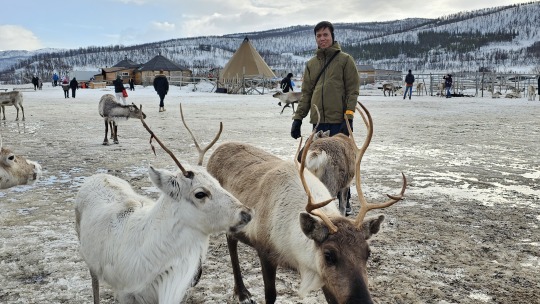
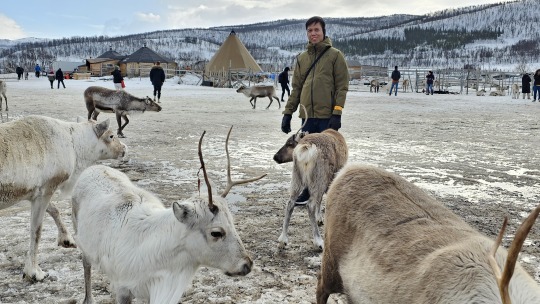
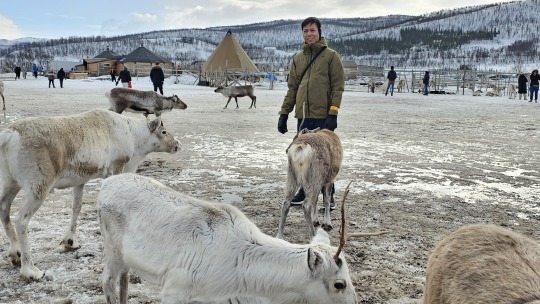
The reindeer arrived after the last ice caps retreated northwards. And when the prey migrated north, we followed suit. Today, the wild reindeer are located in the western part of Jotunheimen, while the domesticated reindeer herders in Vågå and Lom keep their large herds in the eastern part of Jotunheimen.
#roviell#tromso#norway#travel#cablao#rowie cablao#roviell cablao#rovielle cablao#roviel cablao#reindeer#roviell cablao norway#sami culture#sami norway#sami sweden#roviell cablao sweden#roviell cablao denmark#roviell cablao finland
14 notes
·
View notes
Text
Sweden saying they'll vote against allowing the use of Catalan, Basque and Galician in the European Union Parliament because "there's lots of minority languages and we can't allow them all" is so funny because CATALAN HAS MORE SPEAKERS THAN SWEDISH
Catalan is the 13th most spoken language in the EU. It has more than 10 million speakers, which means it has more speakers than other languages that are already official EU languages like Maltese (530,000), Estonian (1.2 million), Latvian (1.5 million), Irish (1.6 million), Slovene (2.5 million), Lithuanian (3 million), Slovak (5 million), Finnish (5.8 million), Danish (6 million), Swedish (10 million), and Bulgarian (10 million).
Neither Galician (3 million) nor Basque (750,000) would still be the least spoken languages to be allowed in the EU representative bodies.
But even if any of them did, so what? Why do speakers of smaller languages deserve less rights than those of bigger languages? How are we supposed to feel represented by the EU Parliament when our representatives aren't even allowed to speak our language, but the dominant groups can speak theirs?
It all comes down to the hatred of language/cultural diversity and the belief that it's an inconvenience, that only the languages of independent countries have any kind of value while the rest should be killed off. After all, isn't that what Sweden has been trying to do to the indigenous Sami people for centuries?
#actualitat#sweden#languages#catalan#basque#galician#sami#saami#europe#european politics#european union#language#langblr#eu#minority languages#minoritized languages#minorities#national minorities#stateless peoples#imperialism
2K notes
·
View notes
Text

Unknown children of Sami (northern indigenous) heritage, 1943, Sweden.
#1943#1940s#vintage photos#vintage children#northern sweden#samer#sami#indigenous peoples#folk dress
271 notes
·
View notes
Text

The Sami flag (The Sámi flag is the flag of Sápmi and the Sámi people, one of the Indigenous people groups of the Nordic countries and the Kola Peninsula of the Russian Federation.)
Wikipedia
74 notes
·
View notes
Text
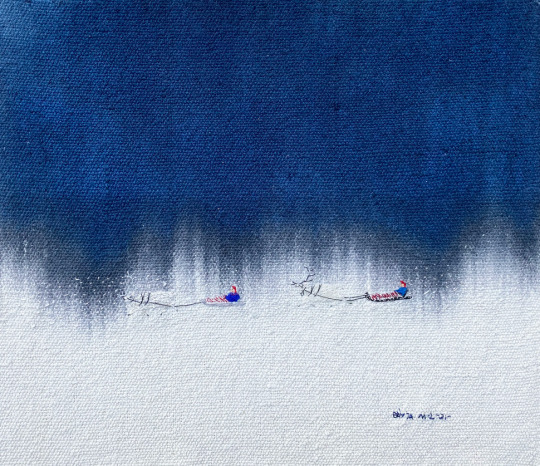
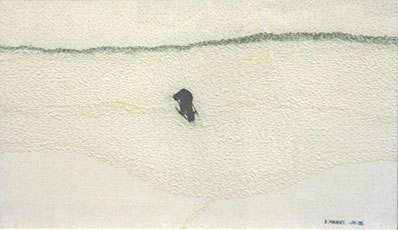

Britta Marakatt-Labba (1951) Sami artist. The works The two of us tonight; You went; and You should have stayed.
The death of her father had a huge impact on five year old Britta Marakatt-Labba. He passed away on Christmas eve, hit by a car while he was on the way to his reindeer herd. She revisited the trauma in her works You went and You should have stayed. The grieving family made her very attentive to people's expression of emotions.
From:
82 notes
·
View notes
Text
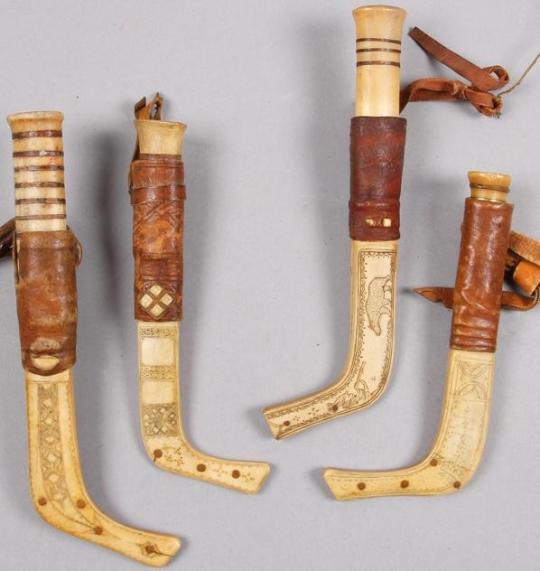


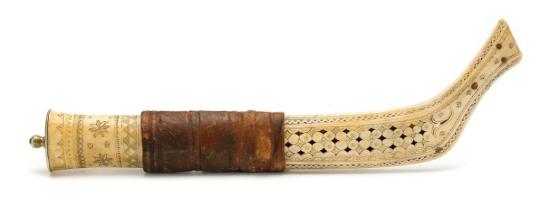

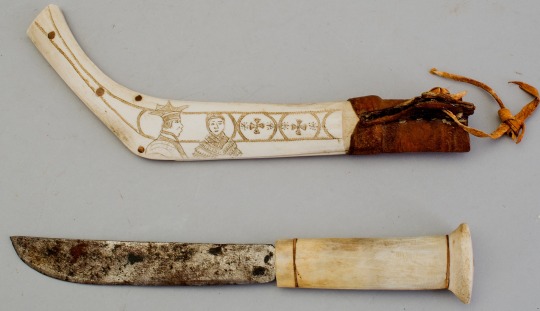
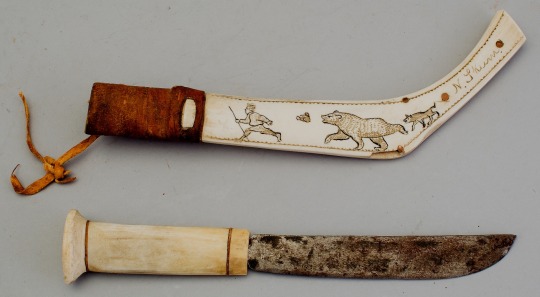

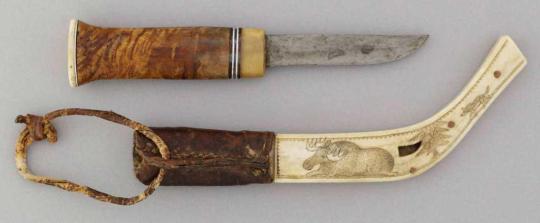


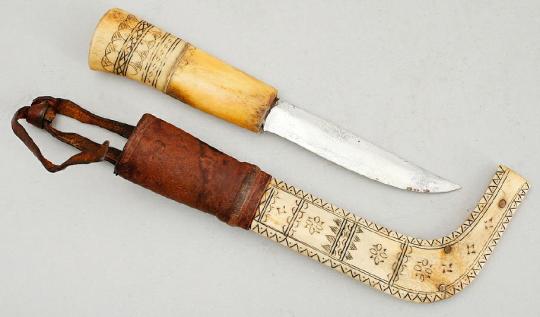
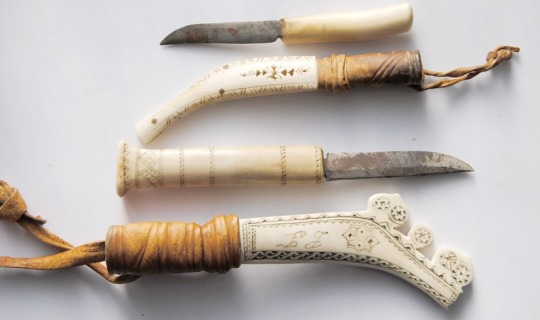

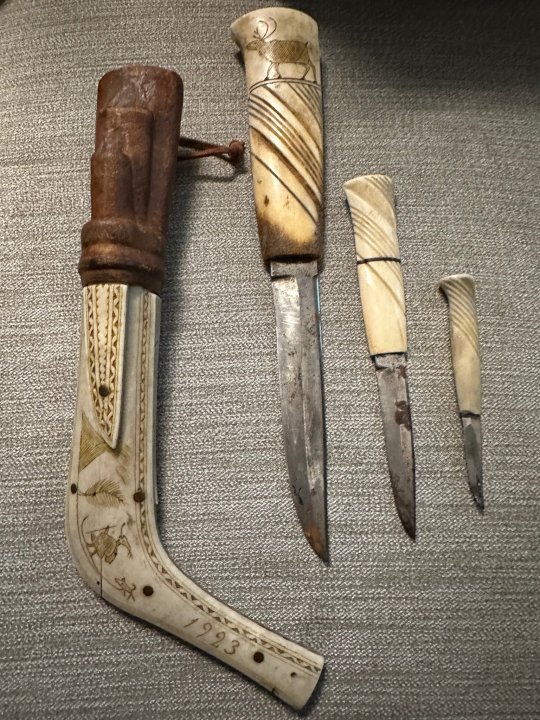
Sami knives, early 20th century
Duodji is a traditional Sámi handicraft, and knives are a big part of it. Handles and sheaths are typically made of reindeer bone and antlers, carved and/or painted, while the blades are sometimes borrowed from the Scandinavian knife industry – Swedish Mora and Finnish puukko blades are common. Decoration is sometimes geometric and sometimes representational: there are reindeer, dogs, bears, sledges, lavvus, landscapes, and people.
Puukko, the Finnish word for "knife", is often used in English to describe these knives, but the same term is also used for a Finnish hunting/utility knife, which has similarities with but is decidedly not a Sami knife, so that's confusing. In Swedish they're called sameknivar (in plural, and samekniv in singular), i.e. Sami knives, and they are made all over Sámi territories in Scandinavia.
These examples are dated from 1901 to 1929, and are mostly from Sweden. They include the work of two of the most celebrated artists of that period, Jon Pålsson Fankki (1880-1861) and Nils Nilsson Skum (1872-1951).
#Sami knife#sweden#scandinavia#trs#tools of the trade#aka Sámi knife#aka Saami knife#aka puukko#Jon Pålsson Fankki#Nils Nilsson Skum#how to stab#terminology#words of the trade
119 notes
·
View notes
Text

15 years ago (Feb 6th, 2010) - Sami National Day 2010
Doodle was shown in: Denmark, Norway, Sweden, Finland
9 notes
·
View notes
Text

An example of close-minded, naïve, woke "leadership".
Sanna Marin squandered opportunities to make Finland great, to resolve the Sami issues and to unite the country both economically and with a path into the future. She focused on Ukraine, made a stink about trans and gays and ignored the elderly that built the great country of Finland.
Then the Finns got smart and threw her and her party out of their leadership role! Wasted talent (like Obama). She wanted greatness for herself, got selfish, self center and an ego the size of Helsinki and let the good people of Finland go without. Finland now is adrift politically and economically.
Sanna Marin, on the other hand, is working for Tony Blair's political consulting organization making big money and living the jet set celebrity life of a now-divorced woman.
#sanna marin#Finland#Wasted Talent#Obama#Selfish#Ego#Helsinki#Pori#Turku#Tampere#Oulu#Lapland#Sami#landscape#fashion#art#nature#gif#lol#diy#Arland#Sweden#European Union#UK#ukraine
14 notes
·
View notes
Text
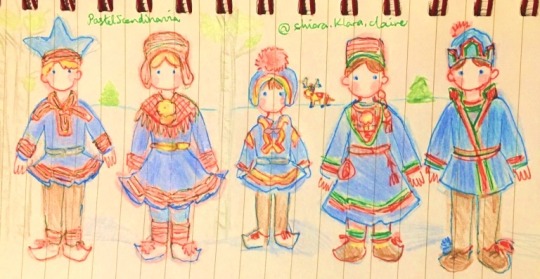

Today is Sámi people national day (and my birthday)! ❤️💚Read my article about Sámi costumes!💛💙
41 notes
·
View notes
Text
Okay I haven't yet read Püha ja õudne lõhn/Sacred and Terrible Air (I'm planning to! I promise!) so I want to ask: What lore does it give about Vaasa, the Suru and all that? I've like, looked at the first chapter so I know it takes place there/references it.
If I want to reference Vaasa and Suru in a fic I'm writing, should I first read that? Or is someone willing/able to give a summary of any additional lore about the area (like what even is the majority language if the suru are a minority??). I will say that I am Finnish so I don't necessarily need any cultural references explained, just any Elysium specific lore.
#i've just Assumed it's a mostly swedish with finnish minority type of inspiration#i know some people say the suru are a stand in for the sami but like...beyond them being A Minority theres no obvious ref to that?#historically you could also argue for a sweden majority rule with a finnish minority because they sure used to rule over us#also obvious disclaimer that i Know none of the countries are supposed to be directly referencing real world stuff but like#obvious inspirations are obvious and all that#disco elysium#ramblings
14 notes
·
View notes
Text







Pehr Högström – Scientist of the Day
Pehr Högström, a Swedish clergyman, traveler, missionary, and linguist, was born Nov. 10, 1714, in what looks to be central Sweden, but is called Northern Sweden, along the coast of the Bay of Bothnia.
read more...
#Pehr Högström#Sweden#Sami culture#sammelband#histsci#histSTM#18th century#history of science#Ashworth#Scientist of the Day
32 notes
·
View notes
Text

Eva Brita Mulka (with a child on her back), 1868, Sweden. She’s of Sami heritage.
#eva brita mulka#women#children#portrait#1860s#19th century#black and white#sepia#Sweden#sami#indigenous#historical#history#europe#people#world#vintage
14 notes
·
View notes
Text

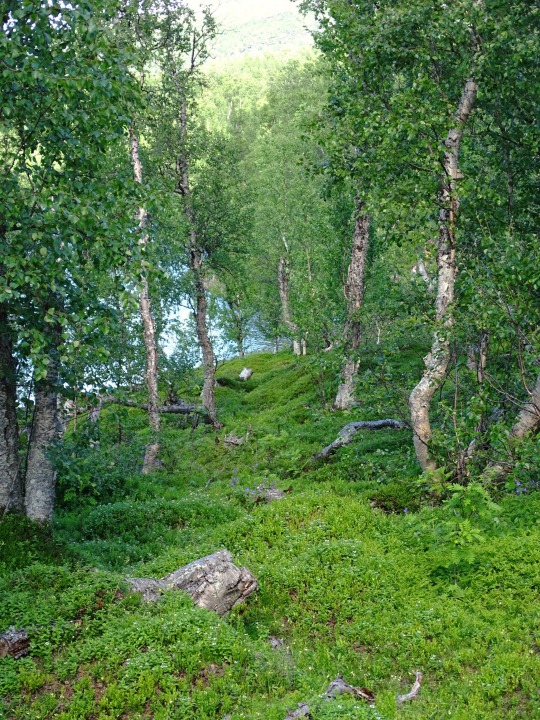




























Sami National Day
Sámi National Day on February 6 is a cultural celebration for the Sámi people. On this day in 1917, the first Sámi congress took place in Trondheim, Norway. The national holiday is also called ‘Samenes Nasjonaldag.’ The Sámi people, or ‘Urbefolkning’ in Norwegian, are indigenous people who live mainly in Norway, but also in Finland, Russia, and Sweden.
History of Sami National Day
On February 6, 1917, Northern and Southern Sámi people came together for the first time for a joint meeting in Trondheim, Norway. Historically crucial, the common concerns of the community were shared and addressed as they worked together to find solutions. The latest statistics estimate that 80,000 Sami people are spread across the four countries — 50,000 in Norway, 20,000 in Sweden, 8,000 in Finland, and 2,000 in Russia.
Sami National Day was created during the proceedings of the 15th Sami conference in Helsinki in 1992. As a combined minority of four countries, Sami people were looked down upon at one point in history. Many laws were forced upon them in an attempt to mold them with the general population. This led to a need for establishing a dedicated day to appreciate them. The first Sámi National Day was observed on February 6, 1993. At the same time, the United Nations proclaimed the opening of the International Year of Indigenous People in Sweden.
Ever since, this holiday has been celebrated grandly by the Sami people residing in Norway. The Sami flag is seen everywhere, and the Sami language is used to chant, sing songs, and the national anthem.
Sami National Day timeline
February 6, 1917
A Joint Meeting
The Sami people’s congress meets for the first time.
1986
The Sami Flag
An important symbol representing the Sami people, the Sami flag is approved at the 13th Nordic Sami Conference.
1992
National Celebration
The Sami National Day is adopted in Norway.
1993
First Celebration
The Sami National Day is celebrated for the first time.
Sami National Day FAQs
How do people celebrate Sami National Day?
Sami National Day is widely celebrated all over Norway and in other countries where Sami people live. The cultural significance of the day is discussed and shared especially in schools. The Sami flag is hoisted, and the national anthem is sung. Traditional food is cooked and the signature clothing of the Sami people is worn today.
How do you say Happy Sami day in Sami?
‘Lihkku Sámi Álbmotbeivviin!’
What is Sami nationality?
Sami are the indigenous people of Northern Sweden, Finland, Norway, and a small part of Russia.
How to Observe Sami National Day
Learn about the Sami people: Sami people are majorly indigenous and are relatively still considered a minority, but their culture is rich and unique. Learn about their traditions and history.
Eat ‘reinsdyrkjøtt’: Eat the popular Sami dishes on Sami National Day. Try reindeer meat, or reinsdyrkjøtt and fish.
Wear traditional clothing: What better way to get into the spirit of the day than by wearing the traditional ‘gákti’ of the Sami people? Wear traditional Sami clothing with respect for the culture and heritage.
5 Interesting Facts About The Sami Flag
Designer of the flag: Astrid Båhl from Skibotn in Norway designed the flag of the Sami people.
The color scheme is intentional: The flag’s colors, red, blue, green, and yellow, are the same as in the traditional Sami costume known as 'kolt.'
The colors are also symbolic: The colors chosen represent essentials that are important for living — red for fire, green for plants, yellow for the sun, and blue for water.
The sun and the moon: The circles on the flag represent both the sun and the moon.
Compulsory traditions: Municipal administrative buildings must fly the Norwegian flag and also the Sami flag.
Why Sami National Day is Important
It celebrates a minority group: The Sami people are well-celebrated throughout the region on this day, but it wasn’t always that way. The community has had a long history of struggle for appreciation, and we are all for giving it!
It is an important holiday: Sami National Day is overall a very important event for Norwegians. It is ideal for learning about the roots of the country’s culture, values, and history.
Breaking barriers: Globalization is gradually eliminating barriers and accepting people for who they are. Indigenous people and minorities are getting the recognition they deserve, and Sami National Day is one such day advocating this.
Source
#caribou#moose#Canada#Sweden#Lapland#Northern Europe#Scandinavia#wildfife#travel#original photography#vacation#tourist attraction#landmark#landscape#Lake Överum#birch#woods#forest#mountains#snow#countryside#summer 2020#2023#Gausjosjö Sameviste Trail#Stor-Laisan#Gäutan lake#Sami National Day#SamiNationalDay#6 February 1917#anniversary
3 notes
·
View notes
Text
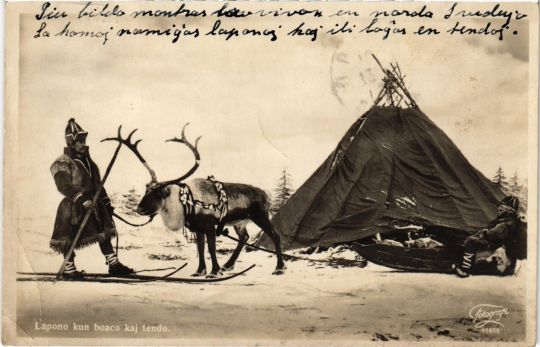
Sami people in northern Sweden
Swedish vintage postcard, mailed to Drancy, France
#historic#briefkaart#postkaart#sami#carte postale#ephemera#northern#tarjeta#photo#drancy#france#postcard#postal#mailed#postkarte#ansichtskarte#sweden#swedish#people#sepia#photography#vintage
14 notes
·
View notes
Text

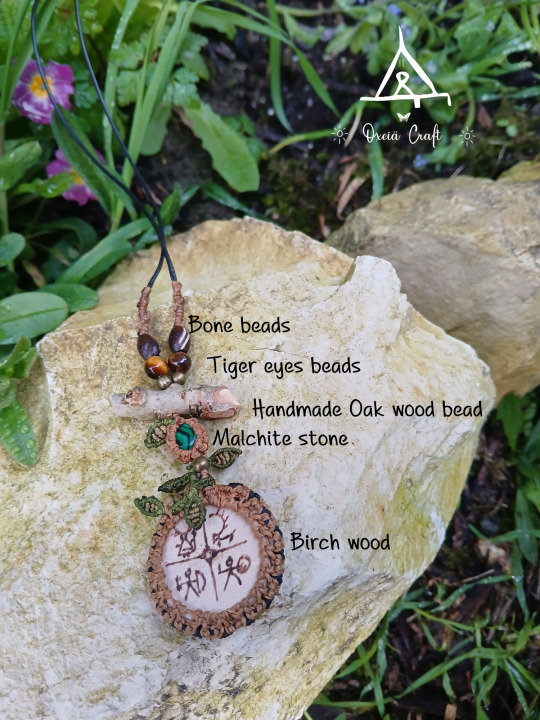
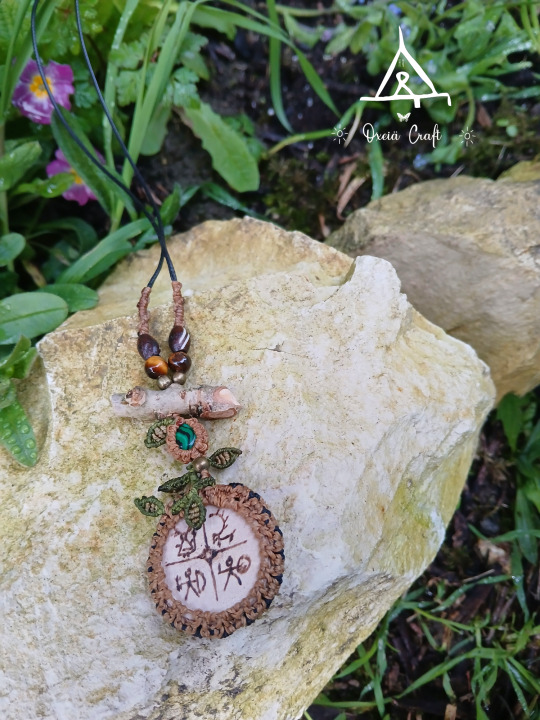
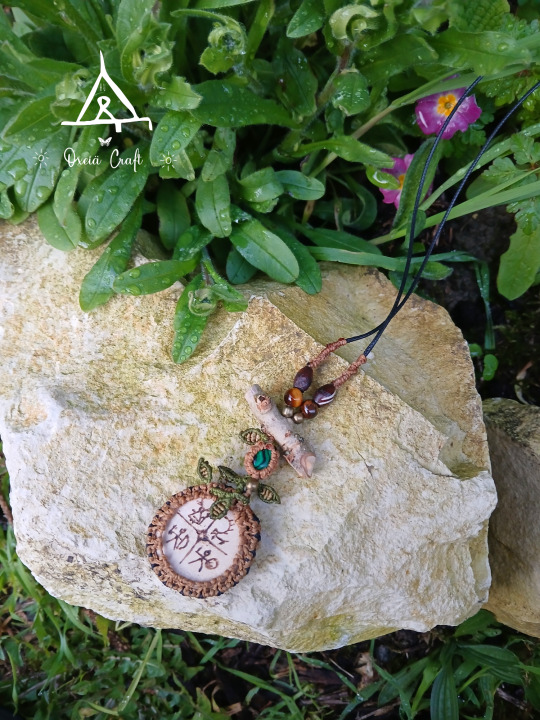

#pagan#forest#nature#witch#magical#witchcraft#goddess#sami#elements#gift#samijewels#swedish#reindeer#saami#scandinavian#lapland#vikings#handmade#sweden#nordic#samicraft#antler#finnishnature#unique#shamanism#norse#pendant#necklace#naturaljewelry#shamanart
16 notes
·
View notes
Text

Barren Earth - On Lonely Towers (Bonus Track Edition) [March 27th, 2015] Country: Finland Genre: Progressive Melodic Death Metal Reuploaded: FLAC
Lineup: Jón Aldará - Vocals Sami Yli-Sirniö - Lead Guitar Janne Perttilä - Rhythm Guitar Olli-Pekka Laine - Bass Marko Tarvonen - Drums Kasper Mårtenson - Keyboards
Guest/Session: Mila Laine - Cello (Tracks 1, 4, 6) Petri Herranen - Saxophone (Track 8)
Miscellaneous Staff: Theodor Kapnas - Recording (Vocals) Jukka-Pekka Miettinen - Recording Petri Majuri - Recording, Mixing Tony Lindgren - Mastering Travis Smith - Cover Art, Layout
Label: Century Media Records
Tracklist:
From The Depths of Spring - 01:25
Howl - 05:39
Frozen Processions - 04:51
A Shapeless Derelict - 07:33
Set Alight - 07:26
On Lonely Towers - 11:52
Chaos, The Songs Within - 07:43
Sirens of Oblivion (Bonus Track) - 07:02
The Vault - 11:07
#Telegram#Barren Earth#Melodic Death Metal#Progressive Melodic Death Metal#Death Metal#Progressive Death Metal#Jón Aldará#Theodor Kapnas#Faroe Islands#Sami Yli-Sirniö#Janne Perttilä#Olli-Pekka Laine#Marko Tarvonen#Kasper Mårtenson#Mila Laine#Petri Herranen#Jukka-Pekka Miettinen#Petri Majuri#Finland#Tony Lindgren#Sweden#Travis Smith#United States#USA#US#Century Media Records#Germany#Artwork#Cover Art#Layout
5 notes
·
View notes